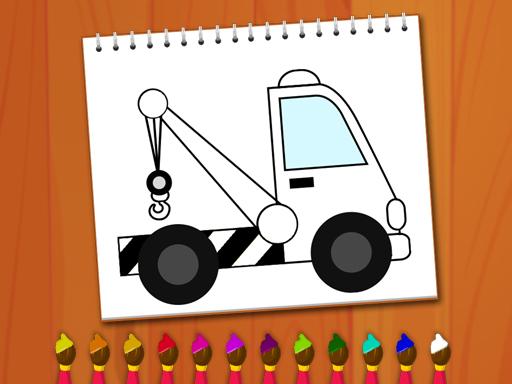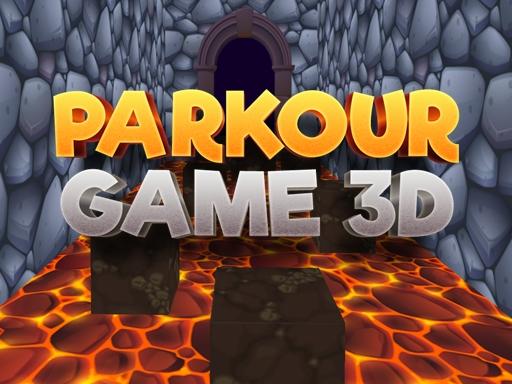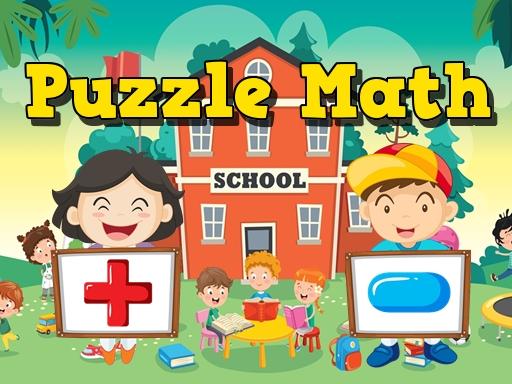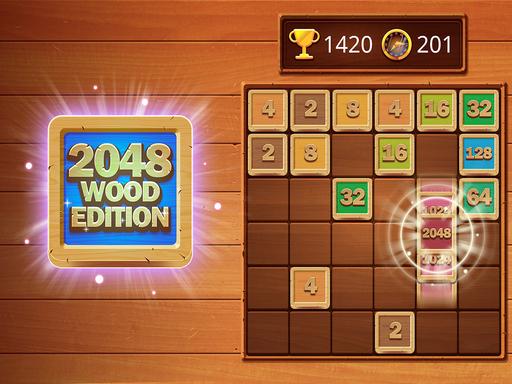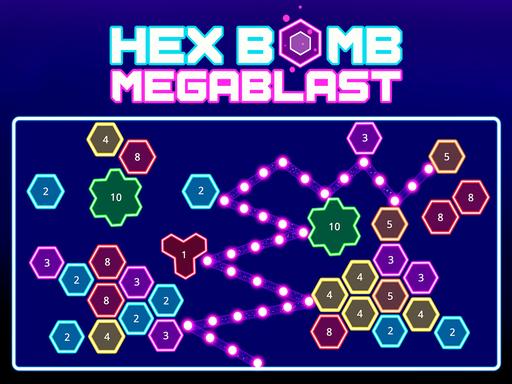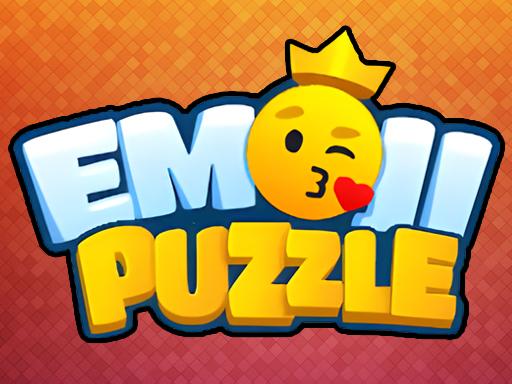New Games
Puzzle Math
Introduction and How to Play Puzzle Math: A Detailed Guide
Puzzle Math is an engaging and educational game that combines the excitement of puzzles with the challenge of solving math problems. Ideal for learners of all ages, this game provides a fun and interactive way to practice and enhance mathematical skills while enjoying a puzzle-solving experience. Whether you’re a student looking to improve your arithmetic or simply someone who enjoys brain teasers, Puzzle Math is the perfect game to exercise your mind.
In this article, we will explore the features of Puzzle Math, explain how to play the game, and offer some tips to help you become a math puzzle master.
What is Puzzle Math?
Puzzle Math is a math-based puzzle game that challenges players to solve various math problems in order to progress through different levels. The game is designed to test your knowledge of basic math operations like addition, subtraction, multiplication, and division. Players are presented with puzzles where solving math problems correctly leads to solving the puzzle itself.
As you solve problems, you’ll unlock new levels with increasingly complex math challenges. The goal is not only to solve the puzzles but also to improve your math skills and speed, making it an ideal game for students or anyone looking to sharpen their mathematical abilities.
Key Features of Puzzle Math
- Educational Gameplay: Puzzle Math is designed to be both educational and fun. The game promotes critical thinking, problem-solving, and the development of basic math skills, making it a great tool for learning and practicing math concepts.
- Various Math Operations: The game covers a wide range of math operations, including addition, subtraction, multiplication, and division. As you progress, you will encounter more advanced operations, such as fractions, percentages, and algebraic equations.
- Multiple Difficulty Levels: Whether you’re a beginner or a math expert, Puzzle Math offers various difficulty levels. You can start with basic arithmetic and gradually move to more complex puzzles as your skills improve.
- Time-Based Challenges: Many levels come with a time limit, adding an extra challenge and encouraging players to solve problems quickly. This feature helps improve speed and efficiency in solving math problems.
- Progress Tracking: Puzzle Math typically includes a system to track your progress, showing how many puzzles you’ve solved and your accuracy. This feature provides valuable feedback on your improvement and helps you set goals for future progress.
- Fun Graphics and Sound: The game features fun and colorful visuals that make math problems more engaging. The use of sounds and animations provides positive reinforcement when you solve puzzles correctly, keeping you motivated.
How to Play Puzzle Math
1. Starting the Game
Once you start Puzzle Math, you will be introduced to the game interface, which is typically straightforward and easy to navigate. If you are new to the game, you may be provided with a brief tutorial that explains the basic rules and controls.
The game often begins with simple puzzles, such as basic addition and subtraction problems, and you can choose the difficulty level that suits your current skill set. As you successfully complete puzzles, the difficulty will gradually increase, introducing more challenging math operations.
2. Understanding the Puzzle Structure
Each level in Puzzle Math presents a puzzle that needs to be solved in order to proceed to the next. The puzzles can vary in format, but most involve solving math problems based on a specific set of instructions.
For example, you may be given a series of equations that need to be completed in order to reveal a hidden image or sequence. Alternatively, you may need to answer a set of math questions that unlock parts of a larger puzzle. The key is to solve the math problems correctly to advance through the game.
3. Types of Math Problems
The math problems in Puzzle Math cover a wide range of topics, including:
- Basic Arithmetic: Addition, subtraction, multiplication, and division are the fundamental math operations covered in the early levels.
- Fractions and Decimals: As you progress, you will encounter problems involving fractions, decimals, and mixed numbers.
- Algebraic Equations: In the higher levels, you may need to solve simple algebraic equations or find missing variables.
- Word Problems: Some puzzles may include word problems that require applying math to real-life scenarios.
- Geometry: You might also come across geometry-related puzzles, such as calculating areas, perimeters, or angles of various shapes.
4. Answering Math Questions
To answer a math problem, simply solve the equation using basic math operations. In some cases, you may need to enter the correct answer into a text box, or select the right option from a multiple-choice list. Pay attention to any hints or instructions provided in the puzzle, as they can guide you towards the correct solution.
5. Progressing Through Levels
As you complete puzzles, you will unlock new levels that present more challenging math problems. Some games include a tiered system, where you need to earn a certain number of stars or points before advancing to the next difficulty level.
For example, you might need to score at least 80% accuracy in the current level to unlock the next stage. You may also encounter bonus levels or challenges that provide extra points or rewards for solving complex problems.
6. Time-Based Challenges
In certain levels, Puzzle Math includes time-based challenges. This means that you need to solve the puzzle within a set time limit, adding pressure and urgency to the gameplay. Time challenges can help improve your ability to solve math problems quickly and efficiently, making them a great way to practice mental math.
7. Feedback and Rewards
After completing each level, you typically receive feedback on your performance. This feedback may include your accuracy, time taken to solve the puzzle, and overall score. Some games also reward players with achievements, such as unlocking new themes, characters, or levels, which adds a sense of progression and accomplishment.
Tips for Success in Puzzle Math
- Practice Regularly: The key to mastering Puzzle Math is consistent practice. The more you play, the faster and more accurate you will become at solving math problems.
- Start with Easy Levels: If you’re new to math puzzles, start with the lower difficulty levels. Gradually work your way up to more challenging problems as your skills improve.
- Use Hints and Break Down Problems: If you’re stuck on a particularly difficult puzzle, take a moment to break down the problem step by step. Some versions of the game also provide hints or help you visualize the problem, which can guide you toward the solution.
- Master Mental Math: Speed is important in time-based challenges. Practice mental math techniques to improve your calculation speed and accuracy.
- Stay Calm Under Pressure: In time-based puzzles, staying calm is key to solving problems quickly. Don’t rush; instead, focus on solving the puzzle one step at a time.
- Track Your Progress: Keep an eye on your performance metrics to see how you’re improving over time. If you notice certain areas of math giving you trouble, dedicate some extra time to practicing those topics.
Conclusion
Puzzle Math is a fun and educational game that makes learning math feel like an adventure. With a wide range of puzzles covering various math topics, the game offers something for everyone, from beginners to advanced learners. Whether you’re looking to improve your arithmetic, tackle word problems, or dive into algebra and geometry, Puzzle Math provides a great platform to enhance your math skills in an enjoyable and interactive way. Keep playing, practicing, and solving puzzles, and watch your math abilities grow!
Instructions
On the computer: use the mouse
On Mobile: use touch
 Home
Home Popular Games
Popular Games Categories
Categories
